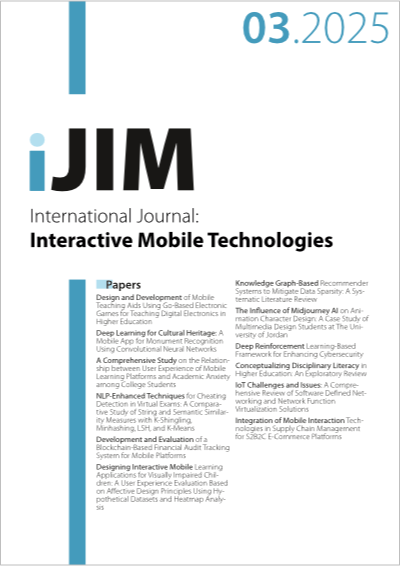Design and Development of Mobile Teaching Aids Using Go-Based Electronic Games for Teaching Digital Electronics in Higher Education
DOI:
https://doi.org/10.3991/ijim.v19i03.51691Keywords:
Teaching aids; Digital electronics; Electronic Technology subjects; Scratch games; University studentsAbstract
The ongoing evolution of technology in education has highlighted the need for modernized instructional methods. This study explores the development of the Go Electronic game, designed to enhance teaching and learning in digital electronics through gamification. Students often face difficulties in understanding digital electronics, a complex subject that is difficult to learn through traditional teaching methods. This gap highlights the need for teaching aids that simplify concepts and maintain student focus through interactive learning approaches. Using the Waterfall model, a systematic development methodology that progresses through sequential phases: requirements analysis, system design, implementation, integration, testing, and maintenance. This approach ensures that each stage is thoroughly completed before moving to the next, allowing for a structured and efficient development process. Go Electronic was developed to address the confusion often faced by university students in this subject area. The research focuses on the integration of new media resources to make the learning process more interactive and engaging. Data collected from interviews with educators at Universiti Pendidikan Sultan Idris (UPSI) confirmed the tool’s effectiveness, emphasizing its potential to improve student focus and engagement. The research findings indicate that the Go Electronic game, developed using this model, effectively enhances student engagement and focus on digital electronics topics. Feedback from educators highlights that the gamified approach not only captures student interest but also supports a more interactive and productive learning experience. The study suggests that expanding the game’s question bank could further improve students’ comprehension, thus advancing the integration of gamification in higher education course delivery.
Downloads
Published
How to Cite
Issue
Section
License
Copyright (c) 2024 Nurul Hazwanie Hasmizan, Mohamed Nor Azhari Azman, Mark Jhon Prestoza, Mohd Syaubari Othman

This work is licensed under a Creative Commons Attribution 4.0 International License.



